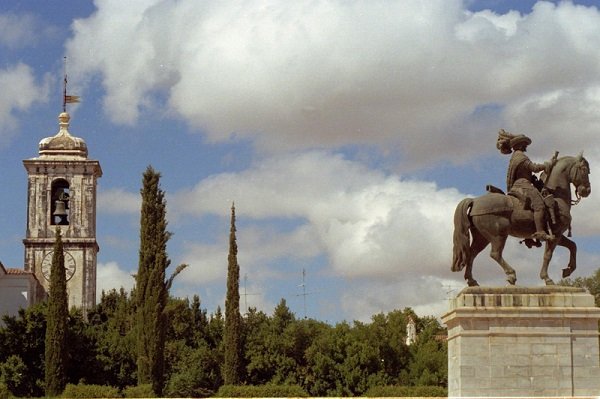Set in one of the hearts of the marble regions of the
Alentejo, Vila Viçosa is a royal town and a witness to Portuguese history.
While Vila Viçosa is famous for its marble with more than 150 quarries, it is a
rare town with huge palace and dozens of former palaces of the royal court.
Some call it the Sintra of the Alentejo. But the town's so much more... with a
marble museum to be seen as well as a hotel with marble and luxury as its
theme.
Vila Viçosa means fertile village, and the green fields and farms are only surpassed by the marble quarries. This is this the hometown of 20th century Portuguese poet Florbela Espanca, a pioneer in the feminist movement. But the town is a bit of everything wonderful; a big central boulevard - the Avenida da República, with mountains, trees and grand cafes and shops, a medieval quarter with winding narrow streets, a castle with a museum, walls and an old quarter. There are several monumental marble churches, marble fountains, and lots of big parks. There is a marble museum, pewter museum, and lots to see and do — plus a great local brewery, a lot of friendly eateries, and the excellent Marmoris Hotel & Spa. The Stone Spa by Bruno Vassari provides relaxing treatments. Many Marmoris’ rooms include a terrace and all have individually designed marble bathrooms. Some rooms offer views of the swimming pool and courtyard.
The House of the Dukes of Bragança, the 3rd dynasty of Portuguese kings called this elegant town, home for 500 years. The enormous Ducal Palace is a rare royal palace where you can see how the dynasty that ruled from 1640 to 1910 lived, and it is open to visitors.
The first Duke of Bragança was D. Afonso, an illegitimate son of King D. João I (1385-1433). But the fourth Duke of Bragança, D. Jaime moved from the old castle to a new palace here in the sixteenth century. By 1640, when the Braganças rose to power, a massive elegant palace had been built.
The year 1640 marked the revolt to end 60 years of Spanish rule. During a royal parliament in 1646, King D. João IV, the eighth Duke of Bragança, offered his crown to the statue of Our Lady of the Conception at the local parish church, and declared her to be the patron saint of Portugal. He asked her to help him win the War of Restoration. The elegant church still has the crowned image to this day.
Set in the heart of Vila Viçosa, the dukes/royal palace towers 1,296 feet over a grand square and a set of marble churches. The building offers a rectangular profile, running east to west. It has three floors with the facade fully faced with masonry and pink marble. Grand rooms are a trip back to the times of kings and queens, but the massive kitchen is a real highlight — as is the seemingly endless royal armory. The next door Pousada D. João IV is built into a 16th century convent, built by D. Jaime of Bragança.
So, if you are looking for a royal town, or just an elegant relaxed escape, Vila Viçosa is the place to escape to.



